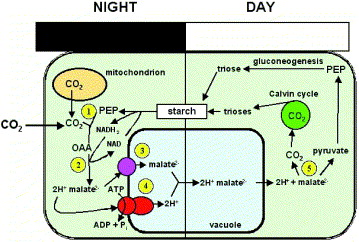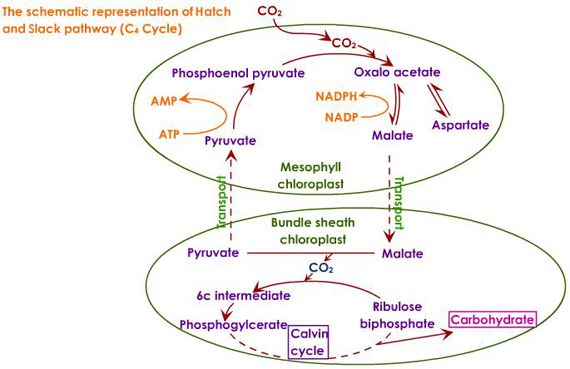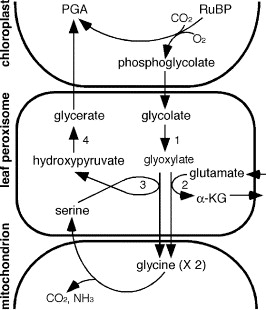Special Adaptations
Special Adaptations Assignment Help | Special Adaptations Homework Help
Special Adaptations
The reductive pentose pathway is utilized for CO2 assimilation in all land plants investigated. The preliminary carboxyation system between atmospheric CO2 and the ribulose diphoshpate carboxylation reaction is of two types: (A) Crassulacean acid metabolism (CAM) and (B) the C4 pathway or Hatch-Slack-Kortaschak (HSK) pathway.(A) Crassulacean Acid Metabolism (CAM)
The membrane of the family Crassulaceane have a special type of metabolism called crassulacean acid metabolism (CAM) which is also exhibited by members of other families. CAM plants are succulents with thick flesly leaves, or, when leaves are absent, a swollen photosynthetic stem. CAM plants can synthesize large amounts of malic and isocitric acids at night. Photosynthesis occurs during the day and these acids disappear. The stomata of the leaves remain closed during the day and open only at night. This is an adaptation to conserve water, since succulents exhibiting CAM are found in dry habitats. During the night CO2 is taken into the leaves through the open stomata. Because photosynthesis is limited by the storage pool of organic acid and carbohydrates, CAM plants are generally slow growing.
The CAM mechanism shows various modifications. Well watered Agave americana shows some normal daytime photosynthesis along with some CO2 fixation at night.
(B) The Hatch-Slack-Kortshchak Pathway
In the Calvin-Benson cycle the first stable compound formed is phosphoglyceric acid (PGA), which has three carbon atoms. Plants in which PGA is the first-formed substances are therefore called C3 plants. The C3 plants have been called “nonefficient plants” by some authors because they cannot grow fast at high temperatures and light intensities. They carry out carbon fixation through the Calvin-Benson 3-carbon pathway. The C4 plants are called “efficient plants” because they grow fast at high temperatures and light intensities.
C4 plant leaves have what is called ‘Kranz anatomy’. A single layer of bundle sheath cells around the vascular bundle is surrounded by a loosely packed layer of mesophyll cells. In tropical grasses the chloroplasts of bundle sheath cells differ from those in mesophyll cells.
(C) Photorespiration and Glycollic Acid Metabolism
Although C3 plants respire in the dark, the rate of oxygen utilization increases markedly when the plants are illuminated. Photorespiration is light-driven efflux of CO2 which proceeds alongside with net CO2 influx during photosynthesis. Photorespiration may attain 50% of the net rate of photosynthesis. Photorespiration results in CO2 evolution in light. This has the net effect of decreasing photosynthesis which prevents plants from achieving a maximum yield in photosynthesis. In crop species the yield would be greater if photorespiration did not occur. The substrate of photorespiration is glycollate. Breeding of plants with lower photorespiration rates, or inhibiting glycollate. Breeding of plants with lower photorespiration rates, or inhibiting glycollate synthesis, would be means of increasing crop yields.
Glycollic acid is a 2-carbon compound which is formed in large quantities in the chloroplasts of C3 plants, from where it moves out into the cytosol.
For more help in Special Adaptations please click the button below to submit your homework assignment.